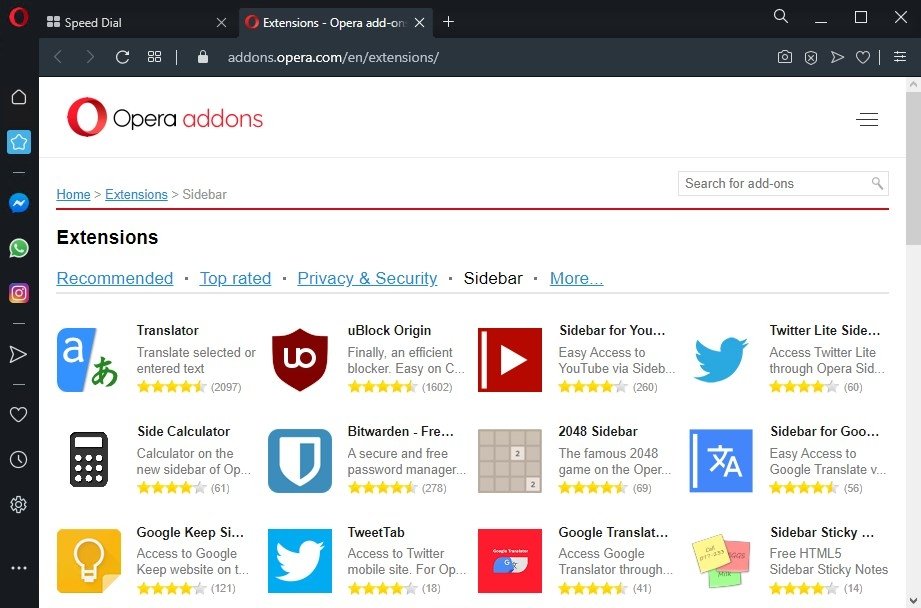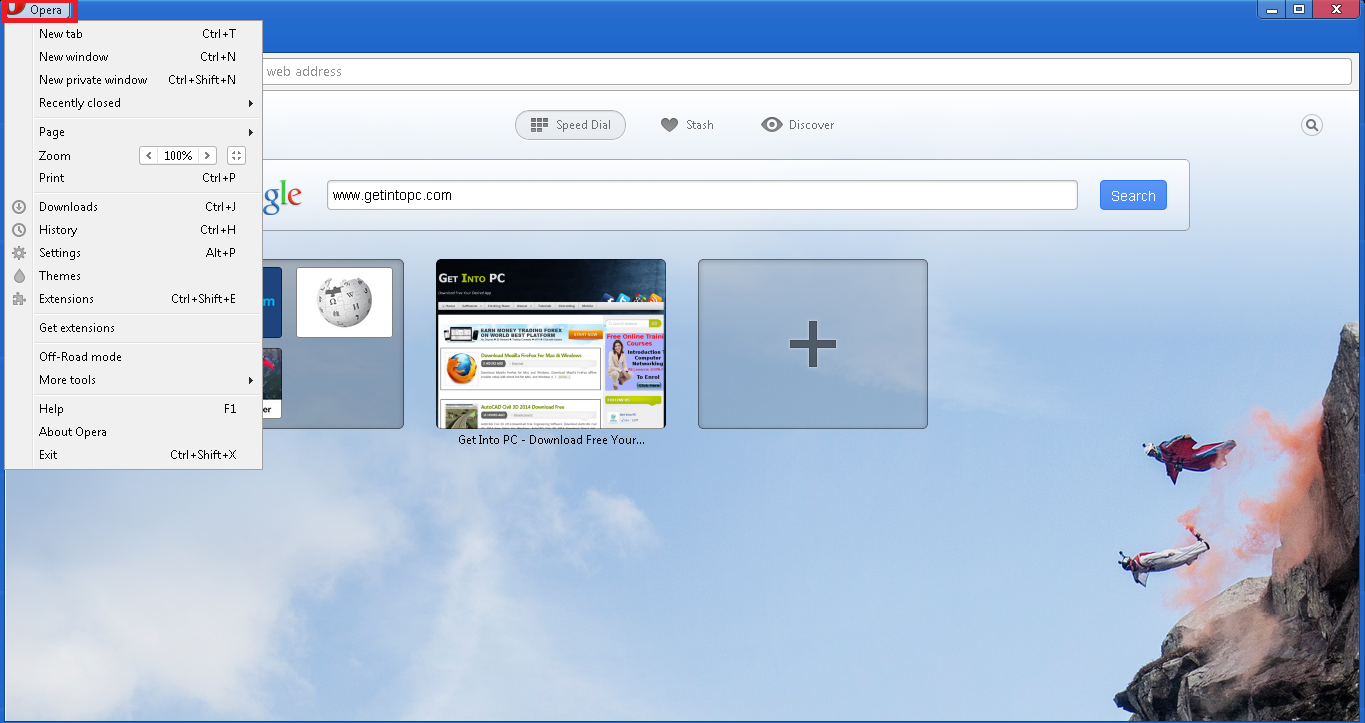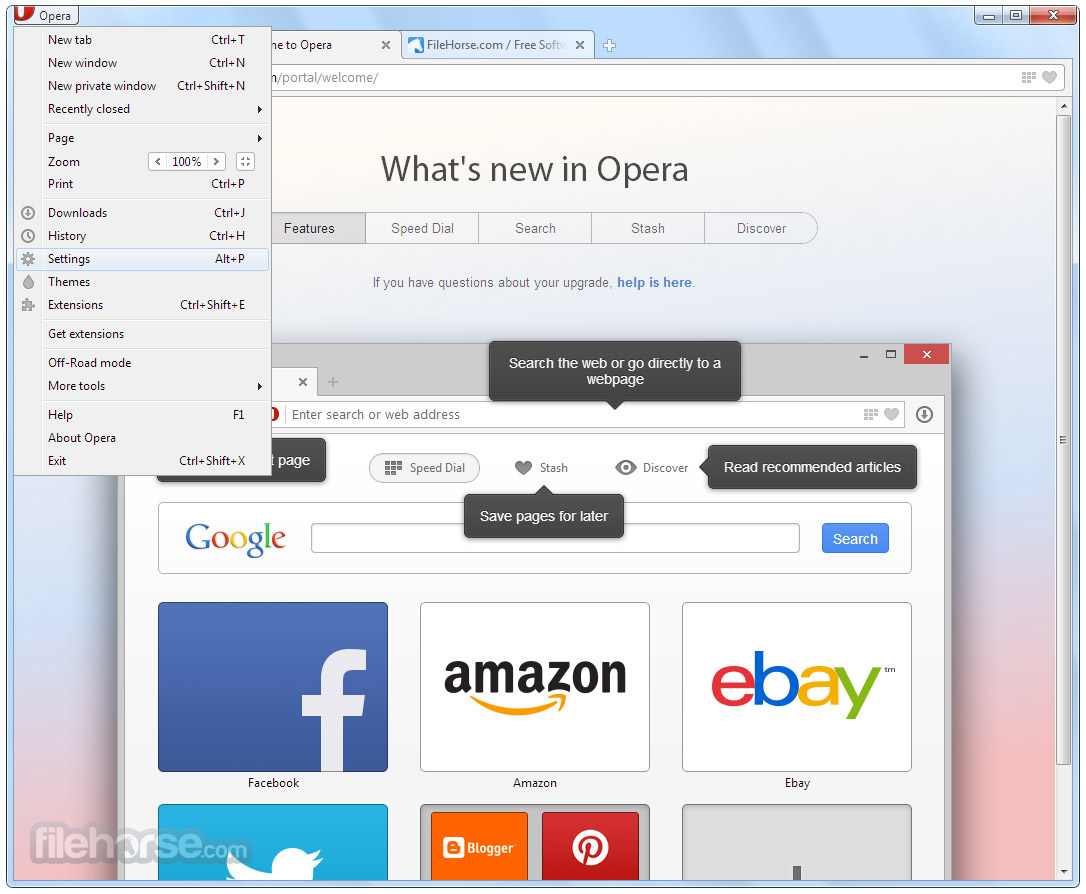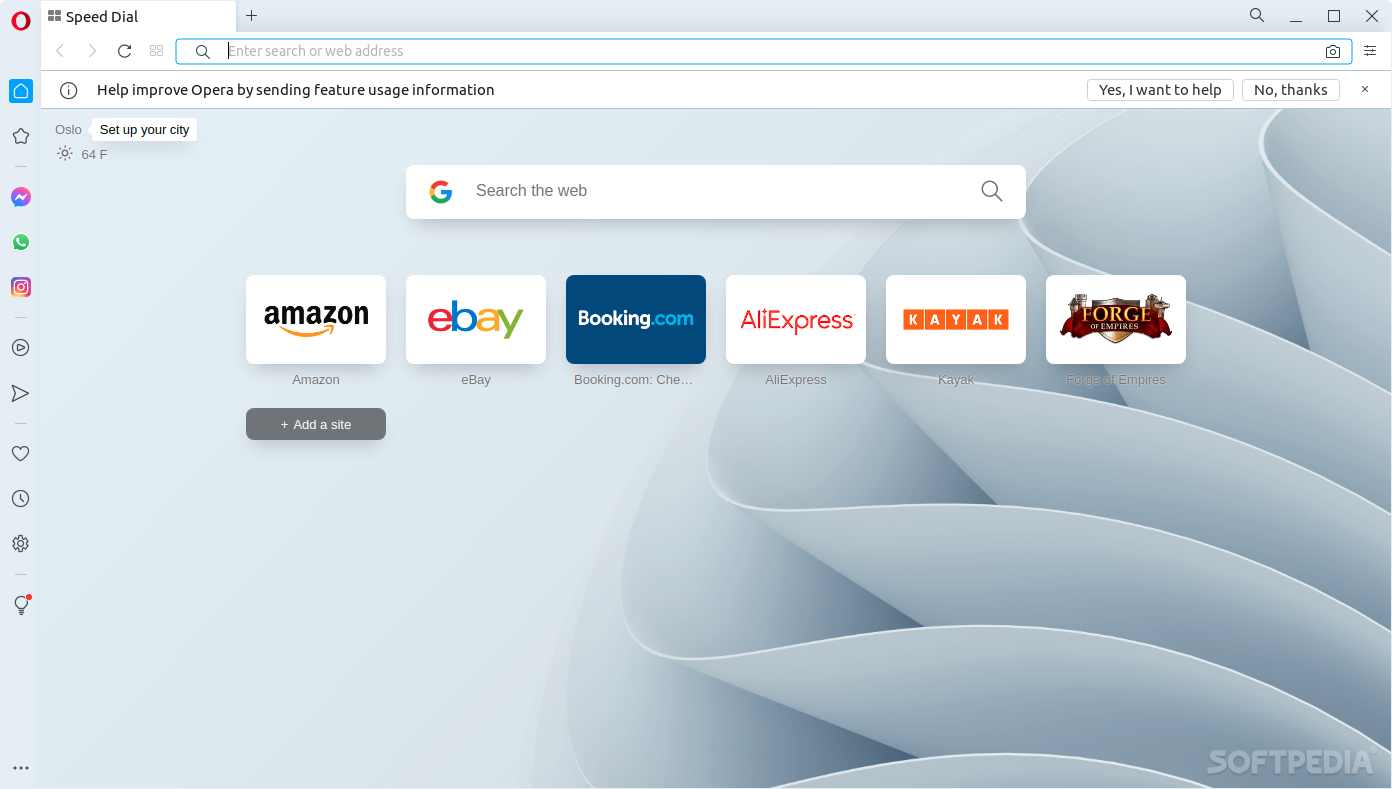
- DOWNLOAD OLDER VERSION OF OPERA FOR MAC FOR MAC OS
- DOWNLOAD OLDER VERSION OF OPERA FOR MAC MAC OS X
- DOWNLOAD OLDER VERSION OF OPERA FOR MAC MAC OS
- DOWNLOAD OLDER VERSION OF OPERA FOR MAC FULL
Opera 11 and later require an Intel-based Mac and 11.10 is the last to support OS X 10.4 Tiger.Opera 10.63 was the last PowerPC version and requires OS X 10.4 Tiger or newer.Opera 10.10 was the last to support OS X 10.3 Panther.Opera 8.54 was the last to support OS X 10.2 Jaguar.
DOWNLOAD OLDER VERSION OF OPERA FOR MAC MAC OS
Opera 6 requires a PowerPC and Mac OS 8.6.The following is based on what we have running on Mac at Low End Mac headquarters. It’s very difficult to find system requirements for older versions of Opera. Opera had eight releases in 2015, versions 27 through 34, and in 2016, it released Opera 35 through 42. Opera 20-26 came out in 2014, all based on Chromium. Opera moved to an accelerated release schedule, as Chrome and Firefox had already done, and also released versions 16 through 19 in 2013. With version 11.0 (December 2010), Opera required an Intel-based Mac, and Opera 12.0 (June 2012) no longer supports OS X 10.4 Tiger.įrom there, Opera skipped 13 and 14, going right to version 15 in July 2013, moving from Opera’s Presto layout engine to WebKit, which Apple uses as Safari’s layout engine and Google uses for its Chrome browser, and becoming part of the Chromium project. Opera 10.6 was about 50% faster and is the last version to support PowerPC Macs. In September 2009, version 10 arrived with speed optimizations and web font support, and 10.5 had an improved JavaScript engine. Opera 9 (June 2006) gained widgets and was the first to pass the Acid2 test, 9.1 added fraud protection, and 9.2 got Speed Dial, a launch page with thumbnails. Opera 8.0 (April 2005) added Scalable Vector Graphics (SVG) support, and version 8.5 dropped ads as Opera became a truly free browser. Version 7.5 added support for RSS news readers. Version 7.3 introduced voice capabilities. Opera 7.0 was the first version to require Mac OS X, dropping support for the Classic Mac OS. With Opera 7.0, the browser moved to the Presto rendering engine in January 2003.
DOWNLOAD OLDER VERSION OF OPERA FOR MAC FOR MAC OS
Mac requirements include a PowerPC Mac and Mac OS 8.6 through OS X 10.2.2 Jaguar – the first Opera release for Mac OS X. Version 6.1 was the first Opera version available for FreeBSD. With version 6 in November 2001, Opera gained Unicode capabilities as well as PNG alpha-channel transparency. Version 5.1 added mouse gestures in April 2001.

DOWNLOAD OLDER VERSION OF OPERA FOR MAC FULL
The installer notes that Unicode and Full Screen View are not supported.
DOWNLOAD OLDER VERSION OF OPERA FOR MAC MAC OS X
Mac requirements are System 7.5.3 through 9.2.x (there is no native Mac OS X support, but it will run in Classic Mode with OS X 10.4.11 and earlier). Opera 5, released at the end of 2000, was ad-supported instead of being shareware with a free trial period. With version 4.0, Opera began using a cross-platform core. It gained tabbed browsing and had support for both XML and Dynamic HTML. Opera 4.0 was the first to require Windows 95 or newer when it was released in June 2000. A beta known as Opera 3.65 was developed for BeOS and released on July 29, 1999. Version 3.6 was the last to support 16-bit Windows 3.x. Version 3.6 (May 1999) improved CSS, HTML, and JavaScript, along with faster rendering of JPEG and GIF images.


It was the first version to support Cascading Style Sheets (CSS). Opera 3.5 used the Elektra rendering engine and added Java support via plug-in. Opera 3.0 was released in December 1997 and was the first version with JavaScript. It was the first version available for Macs. This version introduced full page scaling, allowing the user to zoom from 20% to 1000%. Opera 2.0 was finalized one year later, in April 1996, and the software was released as shareware, but it wasn’t until version 2.1 that Opera was officially released. Opera developed its own engine to render web pages.

The project began in April 1994 with version 1.0 completed in April 1995. Opera 1.0 was an in-house project to demonstrate that Telenor’s programmers were capable of creating a compliant browser. In 1995, Opera was split off into a separate company, Opera Software SA, which remained in Norwegian hands until mid-2016, when the entire Opera browser business was purchased by a Chinese consortium for $600 million, leaving the parent company with Opera Apps & Games and Opera TV. The Opera browser was begun by Telenor, the leading Norwegian telecom company, in early 1994.


 0 kommentar(er)
0 kommentar(er)
